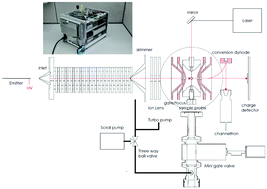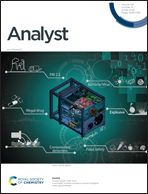A portable multiple ionization source biological mass spectrometer
Abstract
In the past, matrix-assisted laser desorption/ionization (MALDI) and electrospray ionization (ESI), used for large biomolecule detection, were usually installed in two separate mass spectrometers. In this study, they were equipped in the same mass spectrometer. This portable biological mass spectrometer has multiple ionization capabilities in the same mass spectrometer and shares the same mass analyzer and detector. This mass spectrometer can be operated under low vacuum (∼10–3 Torr) and can use air as the buffer gas. Therefore, the demand for pumping is reduced and rare gas feeding is no longer essential. A small scroll pump, employed to assist a miniature turbo pump, is sufficient to maintain the operational pressure. The mass spectra of biomolecules were obtained using frequency scanning instead of voltage ramping. Therefore, a wider mass-to-charge ratio (m/z) range was achieved. Furthermore, the design also couples a conversion dynode with a channeltron to enhance the mass detection range. This homemade mass spectrometer has the capability to measure charged particles with very large m/z values (m/z > 100 000). The concentrations of the studied compounds (angiotensin, insulin, cytochrome C, bovine serum albumin (BSA), immunoglobulin G, and immunoglobulin A) are from 5 femtomole to 100 picomole, and the mass resolutions are from 30 to 260. The mass range of this portable mass spectrometer was comparable with a commercial linear time-of-flight mass spectrometer owing to the use of the frequency scan.



 Please wait while we load your content...
Please wait while we load your content...